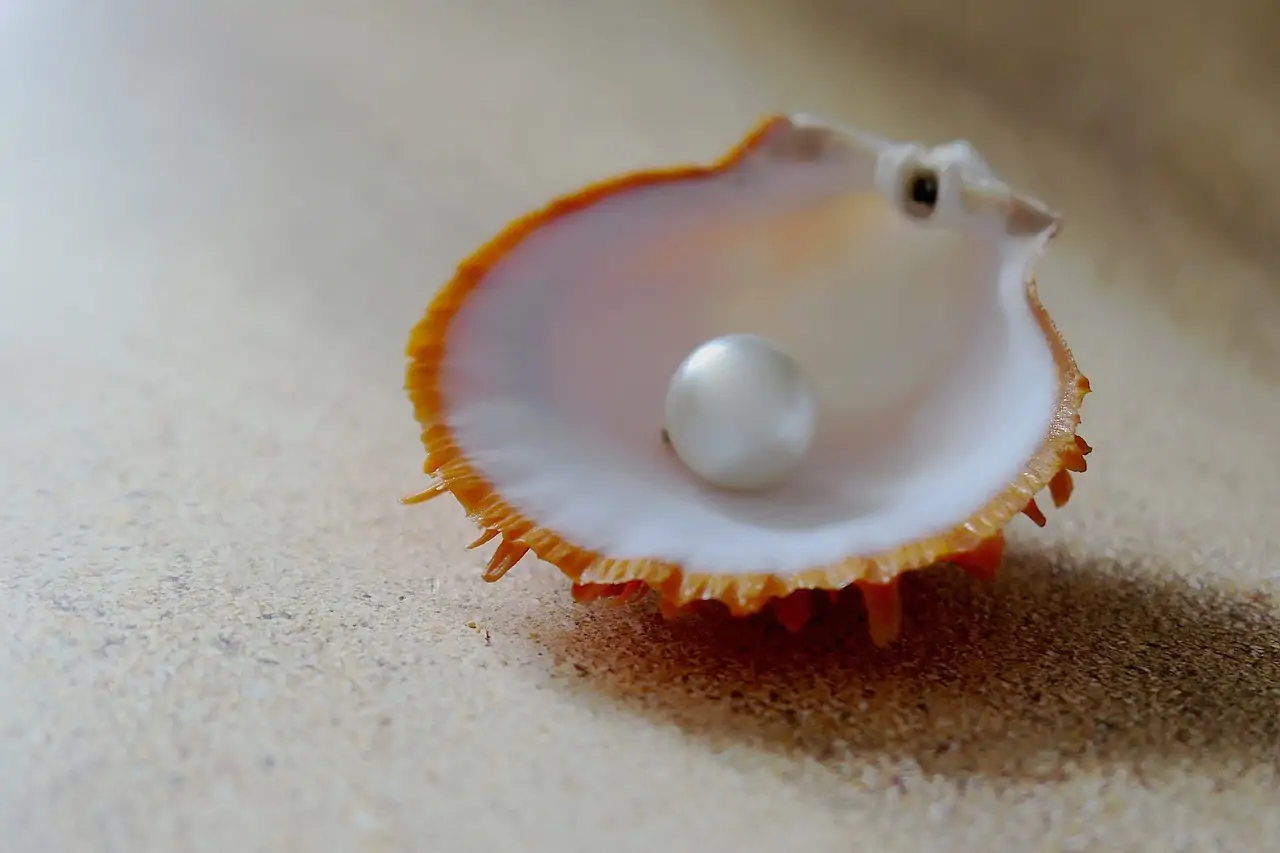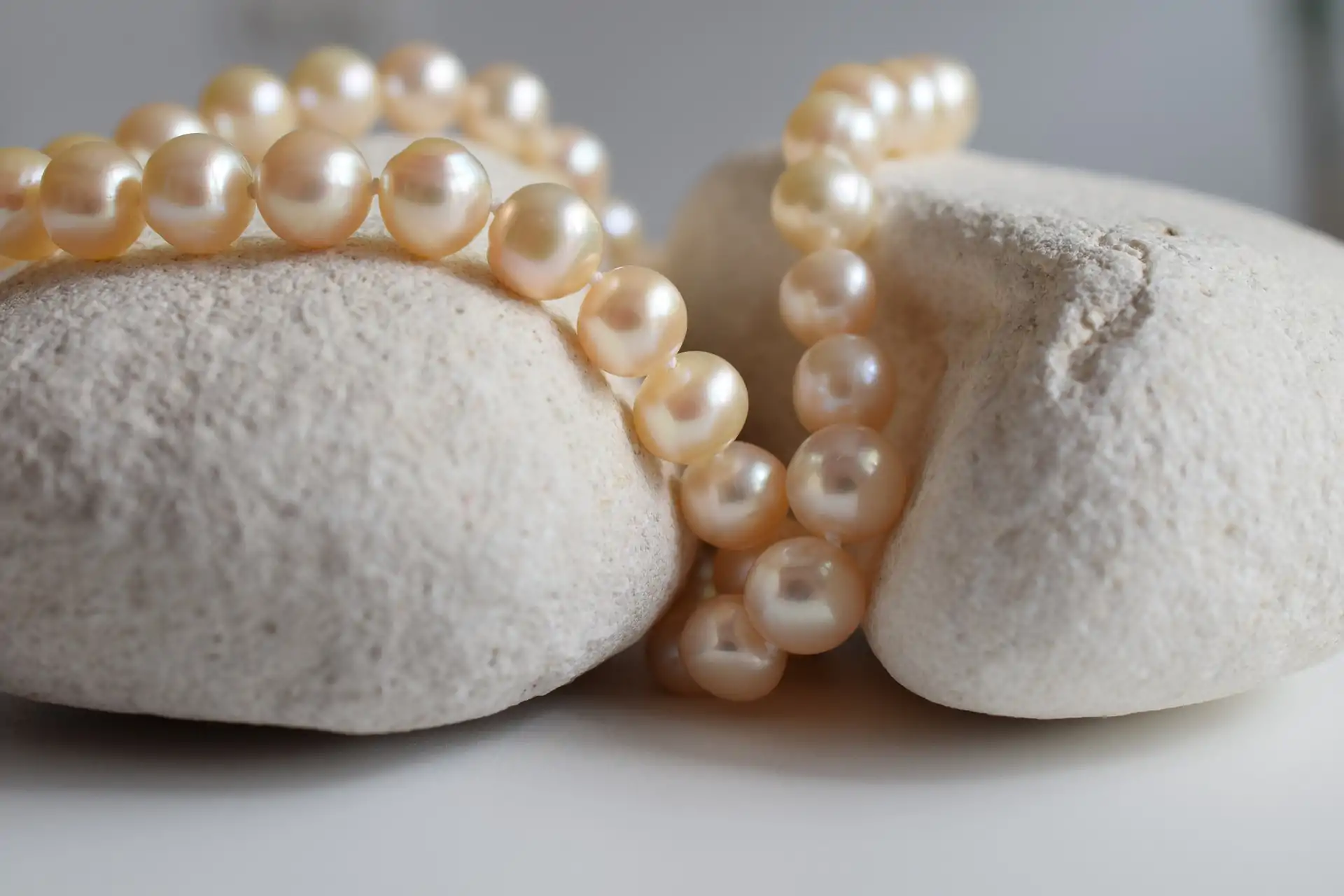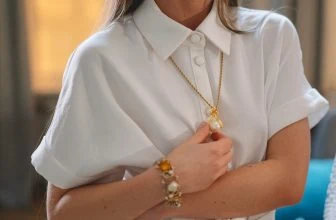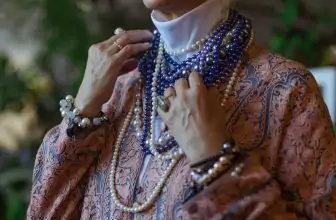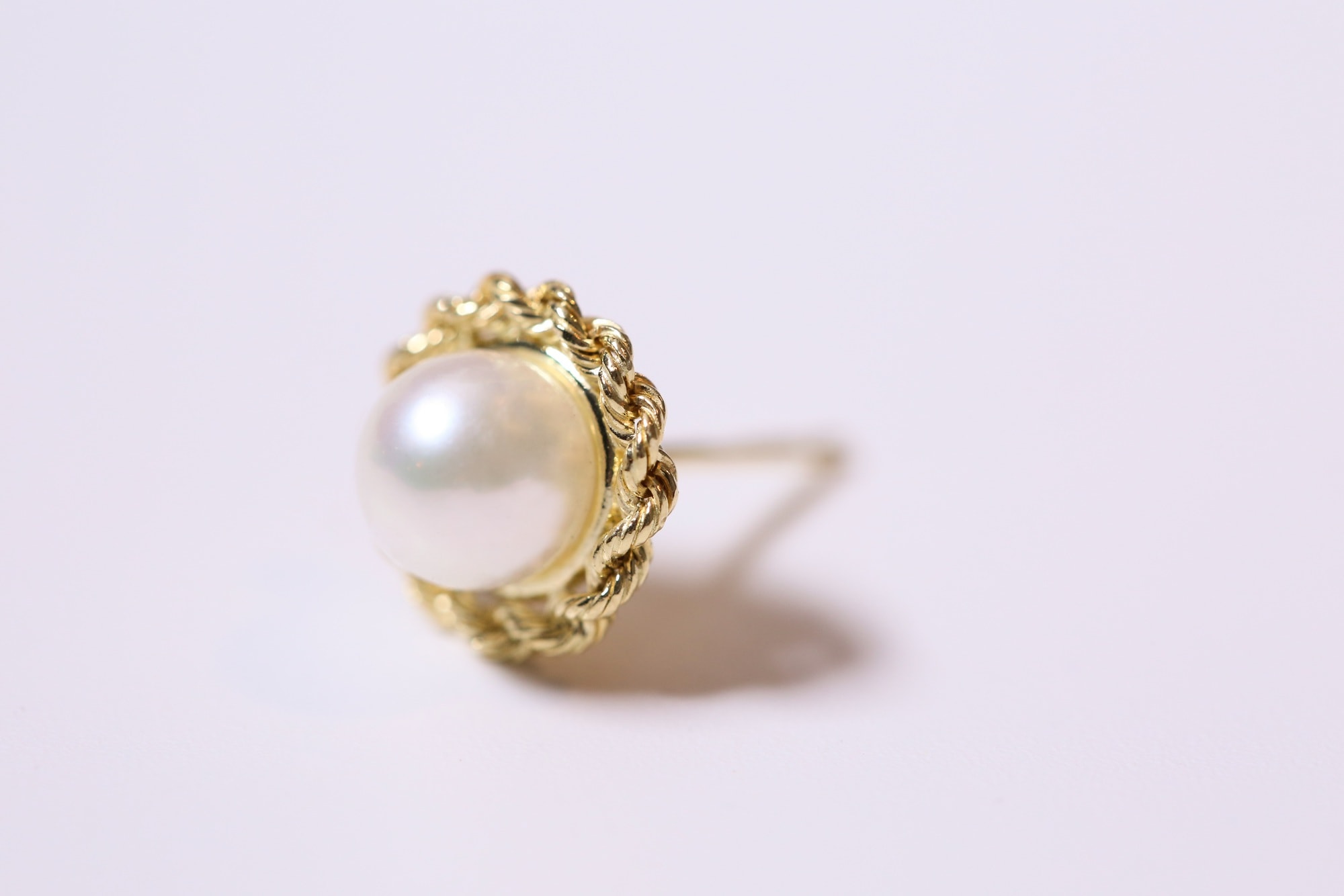
Table of Contents
As Jewelry Shopping Guide editors, we write about things that we love and we think you’ll like too. We often have affiliate partnerships, and may generate some revenue from these links at no cost to you.
One of the most classic yet simple pieces of jewelry is pearl studs. Pearl studs have a warmth, light and femininity about them that other gemstones, like diamonds, just don’t have. Their luster, color and overtones, when properly chosen, are eye-catching in appearance and they go well with just about any outfit. A beautiful pair of pearl studs adds an extra layer of elegance and beauty to any look.
There are a few things to know to ensure that your pearl studs are the right ones for you. Here are our top tips on how to buy the perfect pearl studs.
Natural, Cultured or Imitation Pearls Studs?
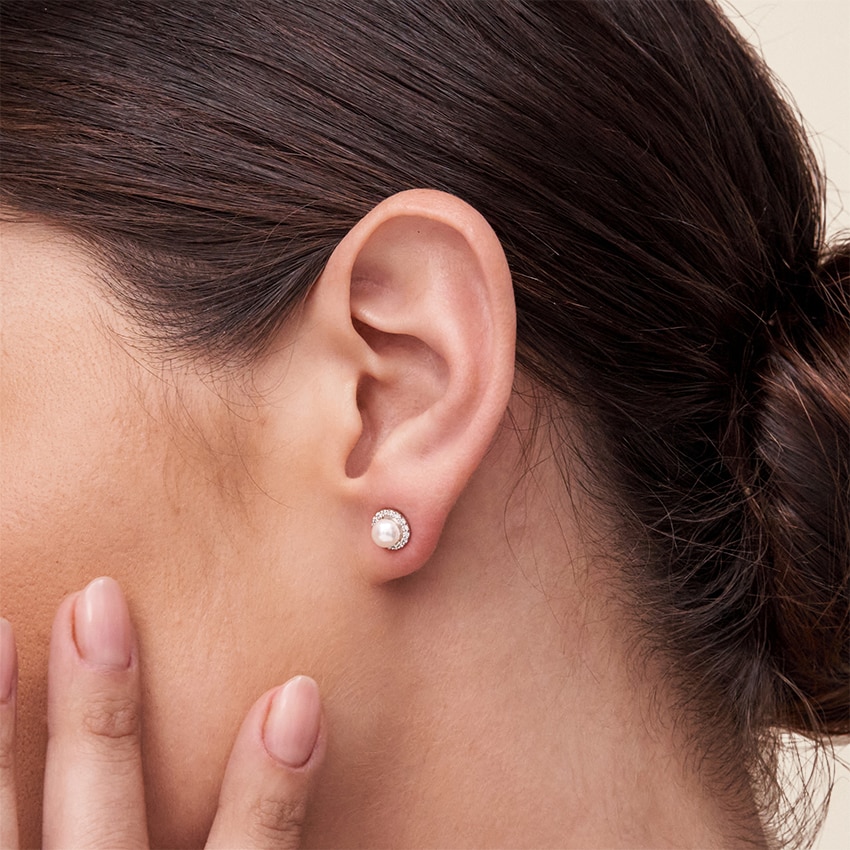
Pearls come in three main categories: natural, cultured and imitation. Natural pearls are extremely rare and very valuable. Cultured pearls are the most commonly found type of real pearl on the market. Although these pearls have been cultivated in farms, they are no less real than a natural pearl. Over 95% of pearls are cultured. These offer good value and often excellent quality.
Imitation pearls are typically made of glass, ceramic or plastic and coated with various substances to mimic the appearance of a real pearl. They have no real value but are a good choice if you want to venture into the world of pearls without laying out too much money.
Choose Your Pearl Stud Color
People are often surprised to find that pearls come in a range of colors and not just white. While white is the quintessential pearl color and ideal if you like the traditional pearl look, you can opt for something different for a modern and fresh take on pearls. Black Tahitian pearls are a statement gemstone and look stunning with their peacock overtones. You could also choose to opt for the luxurious Golden South Sea pearls, often called the Rolls Royce of pearls, which are classic and sophisticated.
Pearls also come in a variety of pastel shades, such as lavender, pink, orange, and yellow. Most of these are freshwater or Akoya pearls that have been dyed to obtain these colors. Although treated, they are still real pearls.
So how do you choose the right color for you?
One consideration would be your skin tone. While white pearls look good on just about anyone, the overtone of the pearl can complement your skin tone perfectly if chosen well. Generally, black and white pearls suit all skin tones, while lighter pearls like white, pink or ivory look great on fairer skin tones and cream and gold pearls look great on dark skin tones. These are just guidelines so go with what looks good on you.
Choose Your Pearl Earring Size
Pearls come in a variety of sizes from about 2.0mm to up to 20.0mm. Having said that, the most common pearl sizes are 7.0 mm to 8.0mm. The size you choose for your studs depends on your features, style and purpose of wearing the earrings.

For earrings you plan on wearing every day, sizes ranging between 7.0mm to 9.0mm are ideal. However, if you want to make a statement and dress up for a formal event, larger pearl sizes are glamorous and stand out easily. Pearls smaller than 6.0mm are ideal for layering and multiple ear piercings.
Consider Pearl Luster
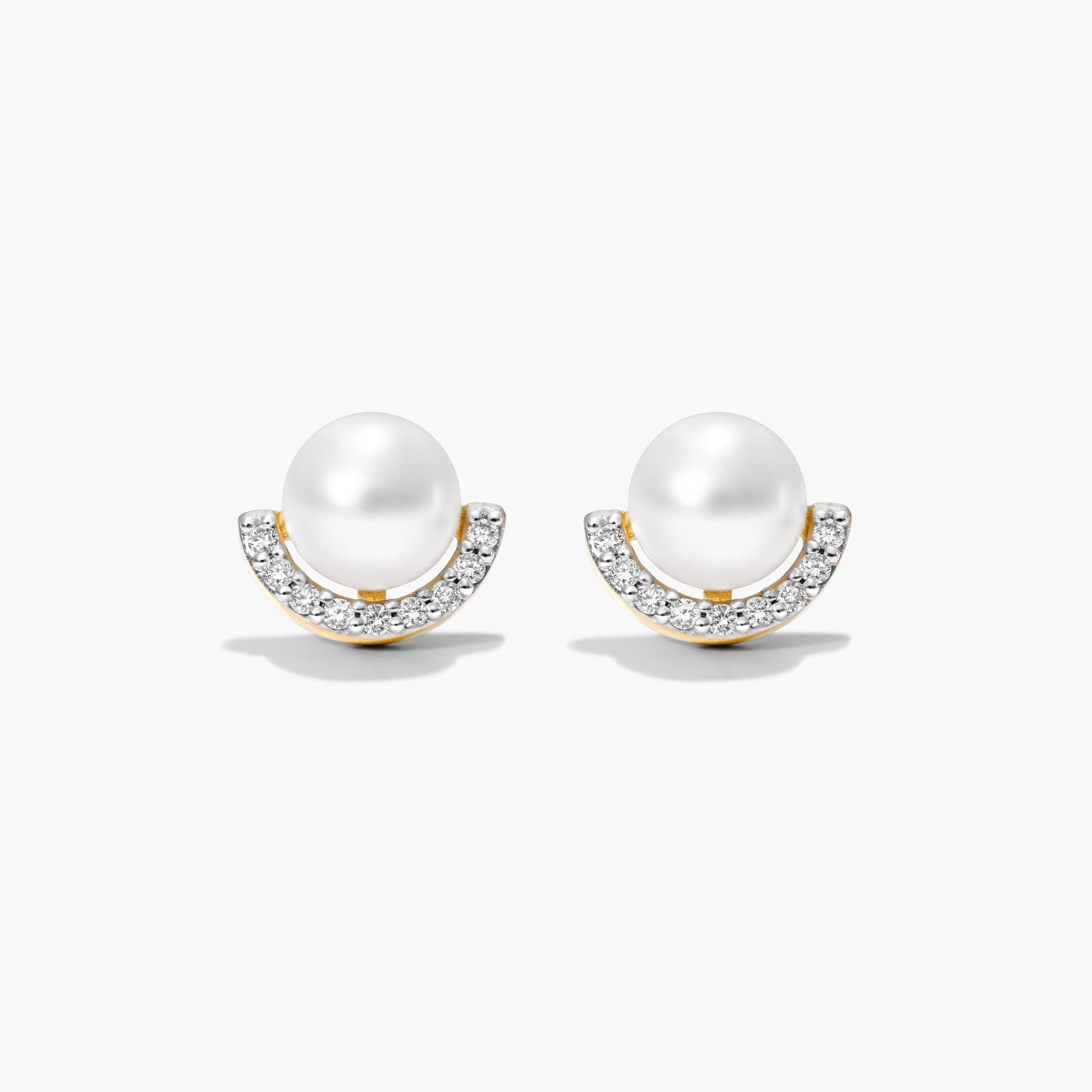
This is probably the most important factor when evaluating the quality of your pearl studs. In general, all things being equal, the value of the pearl increases if the pearl’s luster is high.
Luster can range from excellent (highly reflective) to poor (little to no reflection). When you choose your pearl studs, take care to ensure that your pearls are lustrous and stand out from poorer quality pearls.
Choose Your Pearl Shape
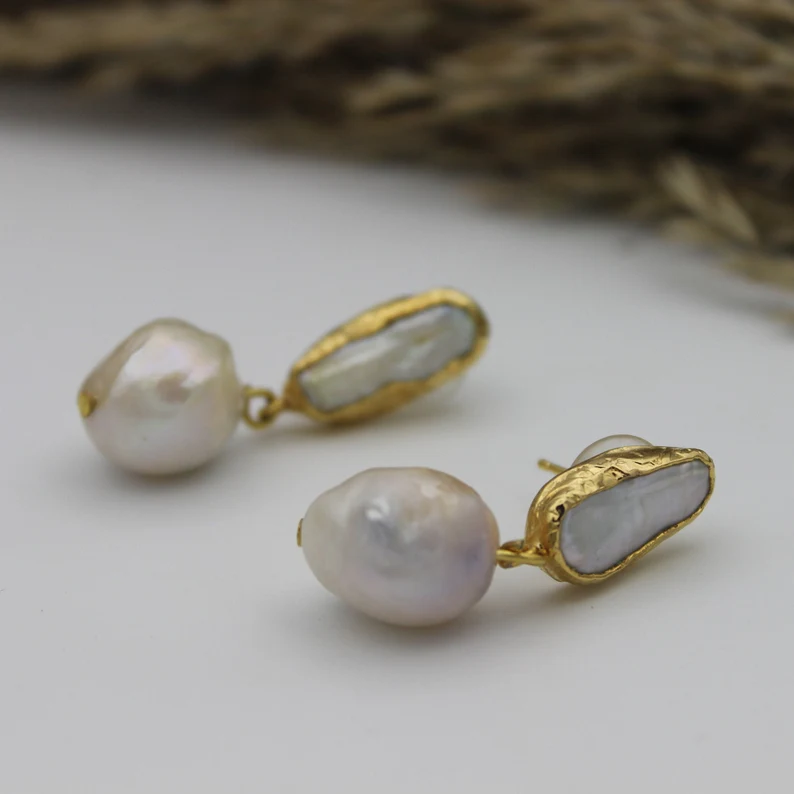
The most valuable and sought-after pearl shape is, of course, the perfectly round sphere. However, pearl shapes can come in many forms. Some popular pearl shapes are semi-baroque, baroque, circle and keshi.
For pearl studs, the pearls should look similar and match in terms of size and shape for symmetry and uniformity. However, if you want a mismatched look (and mismatched earrings are currently on trend!) choose a baroque pair.
Choose Your Metal
Choosing a high quality metal for your earrings will ensure that your studs last for a long time. You cannot go wrong with gold and platinum, which are the most valuable of the jewelry metals. They are also very durable.
If platinum is beyond your budget, you can choose 12K, 14K or 18K gold. The higher the gold karatage, the more expensive the metal.
In terms of metal color, silver-hued metals look beautiful with white and gray pearls, with silver and cream overtones. Yellow and pink pearls with pink overtones look especially beautiful with yellow or rose gold varieties.
Pearl Stud Earring Settings
The classic pearl earring is free of embellishments and consists of the pearl attached to a post and the back fastening. With this simple style, the pearl is the focus and is highlighted on your ear.
For an earring that showcases more bling and glamour, you can choose a pair of pearls with a diamond halo. Not only does this add an extra layer of protection for your pearls, but this style combines the softness and elegance of pearls with the glamour and sparkle of diamonds for a stunning, glamorous effect.
A bezel set pearl earring is another popular option. These are beautiful and offers a lot of protection for your pearls as the metal completely surrounds the pearls. However, a bezel setting can make a pearl appear smaller and removes the focus from the pearls.
Choose Your Earring Fastening
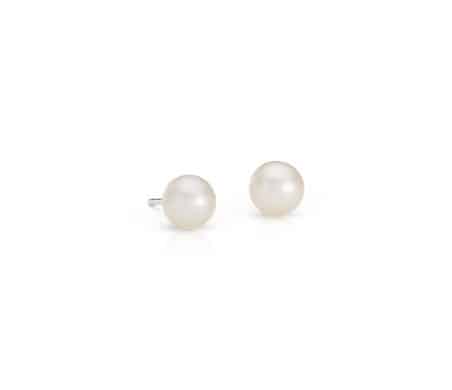
When choosing your pearl studs, don’t forget to consider the earring backs. This is an often overlooked aspect of pearl studs but are really important to keep your studs safe. Here are two popular types of earring stud backings:
1- Screw Back Earring Post and Nut
Here the earring post and nut work like a nut and bolt. This type of fastening is often used with gold or silver backs. Screw backs are very secure and hold your earring firmly in place. The main thing to watch for is that you don’t damage the thread of the nut by forcing the nut up the post or threading it incorrectly. While screw backs offer high security, it also takes a longer time to take on and put on your earrings.
2- Friction Earring Posts and Nuts
These are also known as Butterfly backs or Push-Ons. Friction backs are the most commonly used earring backs and are very easy to put on and take off. A little notch near the end of the earring keeps the nut from sliding off. However, over time, the nut can get loose and the tension holding the nut can decrease, increasing the risk of the nut sliding off the post.
Where to Buy Pearl Stud Earrings
Most jewelers stock pearl studs so you would be able to find a pair in-store. However, if you take your search online, you’ll have access to endless options and very competitive prices. There are numerous retailers that specialize in pearls and operate largely online. The main thing to check for, apart from the quality of the pearls, is the after sales policies of the retailer. Not all pearl jewelry look like the photos that are displayed on retailers’ sites and if you are disappointed by how they look in real life, you should be able to send them back.


